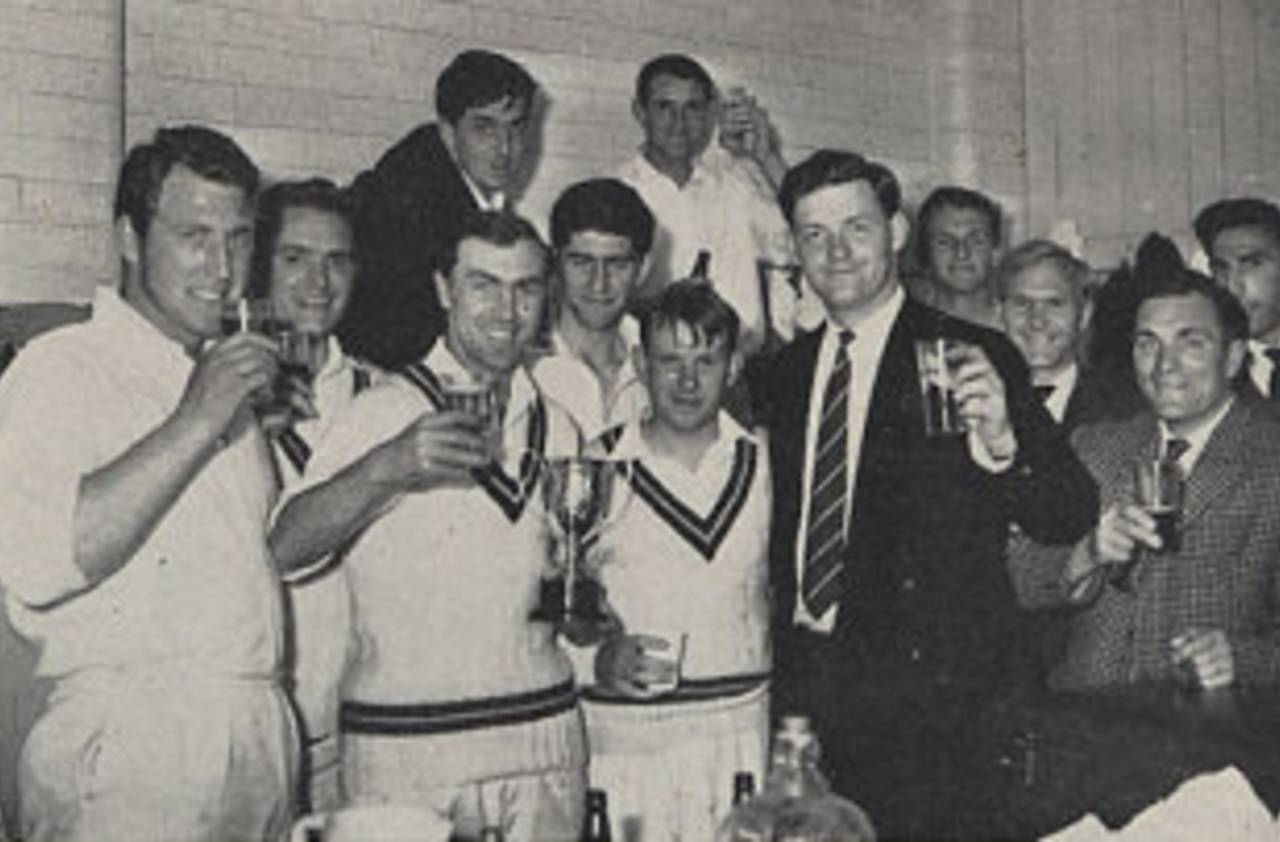It is widely thought that the world's first limited-overs tournament was the Gillette Cup, launched on a chilly May day in Manchester. In fact, the one-day circus had kicked off almost a year earlier, at an equally cold Grace Road in Leicester.
The potential of a one-day knockout cup had already been discussed by English cricket's authorities, and a decision was made to run with the idea as an experiment in 1963. One of those party to the discussion was Mike Turner, the young and forward-looking Leicestershire secretary, and he came away from meetings at The Oval with the idea of hosting a dry run in 1962.
A quick study of the fixture list showed that Leicestershire and three other local sides - Nottinghamshire, Northamptonshire and Derbyshire - were without matches on the first two Wednesdays of the season. Turner was given his committee's backing, and all three counties accepted his invitation to play in a four-county tournament. Kent tried to arrange a similar event in the south-east but found support rather less forthcoming.
"I saw some gaps in the fixture list and phoned around," Turner said. "My opposite numbers jumped at the chance. By the early 60s we had reached the end of cricket 's post-war boom. The crowds had declined and there was a need to make the game viable. These were parlous times and there were arguments about which direction the game should take."
Turner's enthusiasm did much to get the event off the ground. He contacted the television companies, and while the BBC was not interested, a regional commercial station agreed to cover one of the semi-finals, underwriting most of the organising costs, which were not huge anyway, as the teams, all being local, didn't need to stay away overnight.
Turner's enterprise even extended to the trophy for the winners. He found an old cup in a second-hand shop and had it replated and polished by a local silversmith. And thus the Midlands Knock-Out Cup was born.
For all his fervour, Turner could do nothing about the weather, and the semi-finals were staged in bleak conditions. The biting cold kept the attendances low - there were only around 1000 at Grace Road - and the fielders were swathed in several layers of sweaters. One-day cricket was up and shivering.
At Grace Road, Leicestershire
won a close match by seven runs, after bowling Derbyshire out for 243 with 3.2 of their 65 overs remaining. And
at Wantage Road, Notts managed only 137 in 54.2 overs after being set a modest 169 to win by Northants.
One of the main debates arising from the semi-finals was the 15-over limit on each bowler, and this was dropped for the final as the authorities wanted to study the two methods before deciding which would apply to the main competition the following season. There was also much sympathy for the captains, who, on top of bowling limitations, had to ensure that there were not more than five fieldsmen on the leg side or six on the off, and "had to enliven their own thoughts and actions to keep up with the increased pace of the game".
The poor weather was still hanging around for
the final, which was also at Grace Road. Leicestershire struggled to recover from a poor start, and their 218 in 57.2 overs never looked enough as Northants overcame a slow opening to ease to a five-wicket win with almost six overs in hand. Turner was "delighted", and David Kirby, Leicestershire's new captain, said that the players "were all for it".
Critics of the one-day format - and there were plenty - were surprised that the seam bowlers did not dominate, and also that the batsmen did not take any undue risks. That was all to come later. But one reporter presciently noted that, with moisture in the air and in the pitch, "fielding first will undoubtedly become the accepted thing to do".
"The crowds are not exactly flooding in," wrote Brian Chapman in the Daily Mirror. "But I believe they will when they realise the idea does produce bright and challenging cricket." The local Leicester Mercury gushed in a headline: "Champagne Cricket".
In the Cricketer, Leslie Smith welcomed the innovation, and enthused at the increase in the tempo of the game. "I was left wondering why the same approach could not go into three-day county cricket," he wrote. "I am sure that the players and the public would enjoy themselves far more than they do now."
The general consensus was that the format was a success, and that "cricket's FA Cup should be a real money-spinner... the ability to start and finish matches inside a single day must have an appeal to certain sections of the British public". Pandora's box was creaking open.
Is there an incident from the past you would like to know more about? Email us with your comments and suggestions. Bibliography
The Cricketer June 1962
Playfair Cricket Monthly June 1962
Wisden Cricketers' Almanack 1963
Martin Williamson is executive editor of ESPNcricinfo and managing editor of ESPN Digital Media in Europe, the Middle East and Africa
